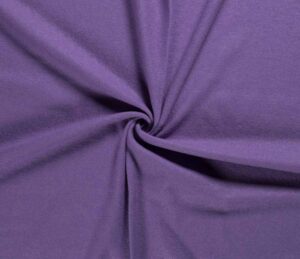How to Remove Wrinkles from Wool and Modal Knit
Introduction
Fabric compatibility is crucial in fashion and sewing, ensuring garments not only look good but also last longer. Wool and modal, both popular in the textile world, offer unique qualities that can be harmoniously combined. In this article, you’ll discover how to effectively remove wrinkles from wool and modal knit, enhancing your fabric’s appearance and longevity.
Compatibility Analysis
YES, wool and modal can be combined successfully. Wool, a natural fiber, is known for its warmth and elasticity, while modal, a semi-synthetic fiber, offers softness and excellent drape. Together, they create a fabric blend that is comfortable, breathable, and aesthetically pleasing. However, they do have different care requirements, which must be considered to maintain their quality.
Key Factors
- Texture: Wool’s natural crimp pairs well with modal’s smoothness.
- Weight: Both are lightweight but offer different levels of insulation.
- Stretch: Wool’s natural elasticity complements modal’s slight stretch.
- Care Requirements: Wool requires gentle handling, while modal is more forgiving.
- Durability: Wool is robust, and modal adds softness without compromising strength.
Fabric Properties Comparison Table
| Property | Wool | Modal |
|---|---|---|
| Fiber Content | Natural | Semi-synthetic |
| Weight and Thickness | Medium to heavy | Light to medium |
| Breathability | High | High |
| Moisture-Wicking | Excellent | Good |
| Stretch and Elasticity | High | Moderate |
| Wrinkle Resistance | Moderate | High |
| Care Instructions | Hand wash, cold water | Machine wash, cold water |
| Durability | High | Moderate to high |
Benefits of Mixing These Fabrics
Combining wool and modal results in a fabric blend that enhances texture and visual interest, offering a luxurious feel and improved comfort. The blend’s better drape and movement make it ideal for garments that need to flow elegantly. This combination is cost-effective and versatile across seasons, providing numerous design possibilities.
Potential Challenges
Despite their compatibility, mixing wool and modal can present challenges. Different shrinkage rates may lead to size discrepancies, while conflicting care requirements demand careful attention. Texture clashes or pilling can occur, and seam puckering might be an issue. Additionally, color bleeding or fading can affect the fabric’s appearance. Practical solutions include pre-washing fabrics, using appropriate interfacing, and selecting colorfast dyes.
Sewing & Styling Tips
When sewing wool and modal, use a ballpoint needle to prevent snags. Polyester thread is recommended for its strength and flexibility. Consider using lightweight interfacing to stabilize areas prone to stretching. Finish seams with a serger or zigzag stitch to prevent fraying. Choose patterns that highlight the fabric’s drape, such as flowing skirts or loose-fitting tops. For styling, layer garments to showcase the blend’s texture and warmth.
Care & Maintenance Guide
To care for wool and modal blends, wash them in cold water using a gentle cycle or hand wash. Avoid harsh detergents and opt for fabric softeners sparingly. Lay garments flat to dry to prevent stretching. When ironing, use a low-heat setting and a pressing cloth to protect the fabric. For stain removal, treat spots promptly with a mild detergent. Regular maintenance will keep your garments looking fresh and vibrant.
FAQ Section
-
Can you wash wool and modal together?
Yes, but use cold water and a gentle cycle to protect both fabrics. -
Will wool shrink more than modal?
Wool is more prone to shrinkage, so handle with care. -
What needle size should I use for sewing wool and modal together?
A size 70/10 or 80/12 ballpoint needle is ideal. -
Can you mix wool and modal in one garment?
Absolutely, they complement each other well in terms of texture and drape. -
How do you prevent pilling when combining these fabrics?
Use a fabric shaver and wash garments inside out to minimize friction. -
Is it okay to mix wool and modal for upholstery?
Yes, but ensure the blend is durable enough for the intended use. -
What’s the best way to finish seams with wool and modal?
Use a serger or a zigzag stitch to secure seams and prevent fraying.
By understanding the properties and care requirements of wool and modal, you can effectively remove wrinkles and maintain the quality of your garments, ensuring they remain stylish and comfortable for years to come.

Leave a Reply